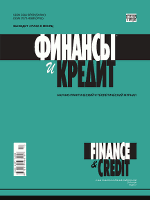Abstracting and IndexingРИНЦReferativny Zhurnal VINITI RAS Worldcat LCCN Permalink Google Scholar Online availableEastvieweLIBRARY.RU Biblioclub |
Monetary and fiscal policies and economic growth in the Russian Federation: econometric estimation results
Available online: 6 December 2014 Subject Heading: ISSUES ON ECONOMICS JEL Classification: Pages: 59-64
The article states that decreasing growth rates of Russian economy necessitate their near-term outlook and determination of the extent of influence of economic policy instruments and external factors on the growth rates. Therefore, there is a need to develop an econometric model, estimate its parameters and prepare a forecast of Russian economy for the next two years under various scenarios of fiscal and monetary policy and dynamics of external economic variables. Using the econometric model, the authors provide a forecast of the main macroeconomic indicators of the Russian economy for the next two years and the influence of monetary and fiscal policy, as well as export and import prices, capital account balance and demographic factors on these indicators. According to the obtained results, the expected GDP growth rates of our country in the next two years will be close to zero, inflation will make 7-8% a year. In this case, investment in fixed capital will be insufficient. Monetary policy measures can reduce inflation but only on condition of further decrease in growth rates. The authors emphasize that capital account balance does not have any impact on GDP growth rates, but it is essential for gross accumulation of capital assets in the long run. The model also enabled to calculate impulse multipliers of exogenous variables defining the extent of their impact on dynamics of endogenous variables. Using the model, the authors concluded about the remaining strong dependence of Russian economy on demographic and external economic factors. They emphasized that monetary policy has a significant impact on the size of gross accumulation of capital assets. The influence of fiscal policy on the main macroeconomic variables is inconsiderable. The model may serve as a tool to forecast our country's economy development, work out the best options of monetary and fiscal policy, and adapt Russia to external economic shocks. Keywords: econometric model, economic growth, fiscal, monetary, policy References:
|
ISSN 2311-8709 (Online)
|
|








